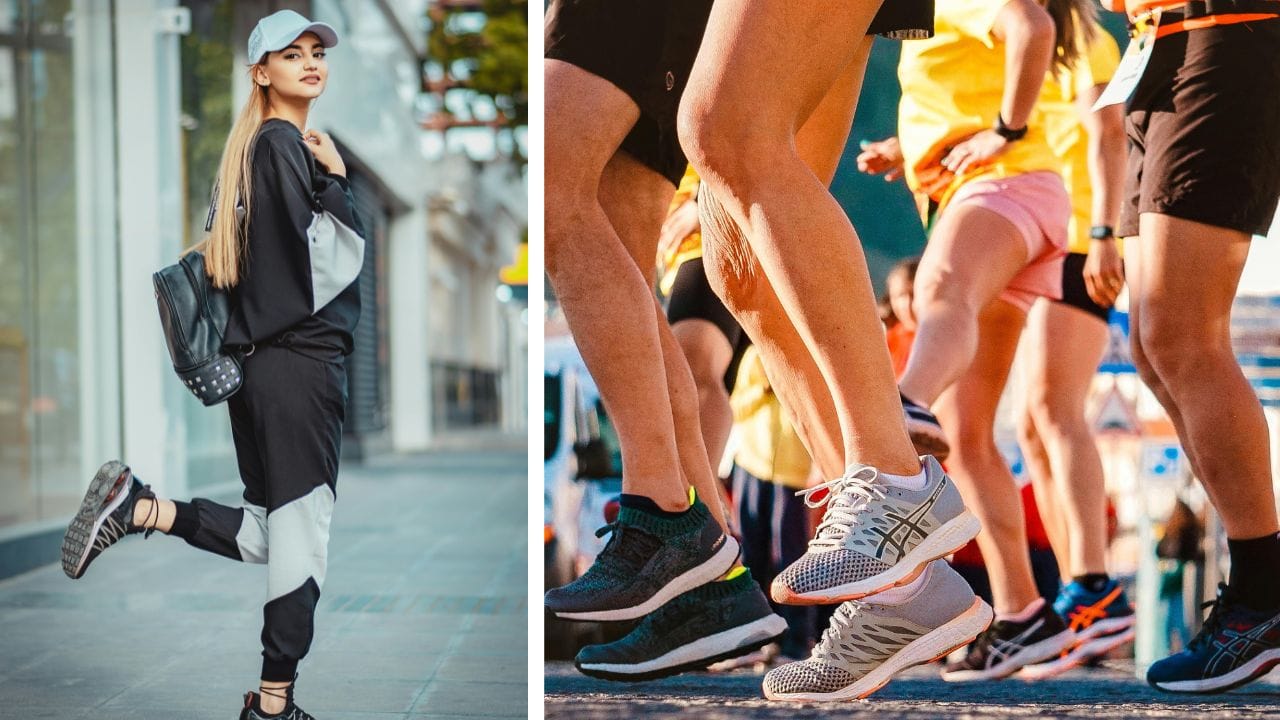Do Barefoot Shoes Have Arch Support? An In-Depth Look
Barefoot shoes mimic the natural shape and function of the foot, usually providing minimal arch support.

Key Takeaways:
- Barefoot shoes are designed to mimic the natural shape and function of the foot.
- They typically lack traditional arch support, promoting natural foot movement.
- The benefits and drawbacks of barefoot shoes depend on individual needs and preferences.
Introduction to Barefoot Shoes
Barefoot shoes have been making waves in the footwear industry, promising a more natural walking experience. But do they provide the arch support that many people need? This article dives deep into the world of barefoot shoes, exploring their design, benefits, and whether they offer the arch support that some feet crave.
What Are Barefoot Shoes?
Barefoot shoes are designed to mimic the natural shape and function of the human foot. They are characterized by a minimalistic design, thin soles, and a wide toe box. The idea is to allow the foot to move as it would if you were walking barefoot, promoting a more natural gait and foot function.
These shoes often lack the cushioning and support found in traditional footwear. Instead, they encourage the muscles in your feet to work harder, potentially strengthening them over time. But this raises the question: do they provide the necessary arch support?
The Concept of Arch Support
Arch support refers to the structure within a shoe that supports the arch of the foot. Traditional shoes often include built-in arch supports to help distribute pressure evenly across the foot and provide stability. This can be particularly beneficial for individuals with flat feet or high arches.
However, barefoot shoes typically do not include traditional arch supports. Instead, they rely on the natural strength and flexibility of the foot to provide support. This can be a significant shift for those accustomed to more structured footwear.
The Science Behind Barefoot Shoes
Research suggests that barefoot shoes can help improve foot strength and function. By allowing the foot to move naturally, these shoes can encourage the development of stronger muscles and tendons. This can lead to better balance, reduced risk of injury, and improved overall foot health.
However, the lack of arch support in barefoot shoes can be a double-edged sword. While some people may benefit from the increased foot strength, others may experience discomfort or pain, particularly if they have pre-existing foot conditions.
Benefits of Barefoot Shoes
One of the primary benefits of barefoot shoes is their ability to promote natural foot movement. This can lead to stronger muscles, improved balance, and a more natural gait. Additionally, the wide toe box allows for better toe splay, which can improve stability and reduce the risk of bunions and other foot deformities.
Another benefit is the increased sensory feedback from the ground. This can help improve proprioception, or the body's ability to sense its position in space. This can be particularly beneficial for athletes and individuals looking to improve their balance and coordination.
Drawbacks of Barefoot Shoes
Despite their benefits, barefoot shoes are not without their drawbacks. The lack of arch support can be problematic for individuals with flat feet or high arches. Without proper support, these individuals may experience discomfort, pain, or even injury.
Additionally, the minimalistic design of barefoot shoes means they offer little protection from rough or uneven surfaces. This can increase the risk of cuts, bruises, and other injuries, particularly for those who are not used to walking barefoot.
Who Should Consider Barefoot Shoes?
Barefoot shoes can be a great option for individuals looking to strengthen their feet and improve their natural gait. They can be particularly beneficial for athletes, runners, and those looking to improve their balance and coordination.
However, they may not be suitable for everyone. Individuals with flat feet, high arches, or other foot conditions may need the additional support provided by traditional footwear. It's essential to consider your individual needs and consult with a healthcare professional if you have any concerns.
Transitioning to Barefoot Shoes
Transitioning to barefoot shoes can be a gradual process. It's essential to give your feet time to adjust to the new footwear, particularly if you are used to more structured shoes. Start by wearing barefoot shoes for short periods and gradually increase the duration as your feet become stronger.
It's also important to pay attention to your body and any signs of discomfort or pain. If you experience any issues, it may be necessary to consult with a healthcare professional or consider alternative footwear options.
Case Study: Athletes and Barefoot Shoes
Many athletes have successfully transitioned to barefoot shoes and experienced significant benefits. For example, some runners have reported improved performance and reduced injury rates after switching to barefoot shoes. By allowing their feet to move naturally, they have been able to strengthen their muscles and improve their overall foot health.
However, it's important to note that not all athletes will experience the same benefits. Individual results can vary, and it's essential to consider your unique needs and circumstances when deciding whether to try barefoot shoes.
Case Study: Everyday Users
Everyday users of barefoot shoes have also reported positive experiences. Many individuals have found that barefoot shoes help improve their balance, reduce foot pain, and promote a more natural gait. By allowing their feet to move as they were designed, they have been able to strengthen their muscles and improve their overall foot health.
However, some users have reported discomfort or pain, particularly if they have pre-existing foot conditions. It's essential to consider your individual needs and consult with a healthcare professional if you have any concerns.
Expert Opinions on Barefoot Shoes
Experts in the field of podiatry and sports medicine have mixed opinions on barefoot shoes. Some believe that they can be beneficial for improving foot strength and function, while others caution against the lack of arch support and potential for injury.
It's essential to consider the expert opinions and research available when deciding whether to try barefoot shoes. Consulting with a healthcare professional can also provide valuable insights and help you make an informed decision.
Alternatives to Barefoot Shoes
If barefoot shoes are not suitable for your needs, there are several alternatives to consider. Traditional shoes with built-in arch support can provide the stability and comfort that some individuals require. Additionally, there are minimalist shoes that offer a compromise between barefoot shoes and traditional footwear, providing some support while still allowing for natural foot movement.
It's essential to consider your individual needs and preferences when choosing the right footwear. Consulting with a healthcare professional can also provide valuable insights and help you make an informed decision.
How to Choose the Right Barefoot Shoes
Choosing the right barefoot shoes can be a daunting task, particularly with the wide variety of options available. It's essential to consider factors such as fit, comfort, and the specific activities you plan to use the shoes for. Trying on multiple pairs and paying attention to how they feel on your feet can help you find the right fit.
Additionally, it's important to consider the materials and construction of the shoes. High-quality materials and craftsmanship can ensure that your barefoot shoes provide the support and durability you need.
Caring for Your Barefoot Shoes
Proper care and maintenance can help extend the life of your barefoot shoes. Regularly cleaning and inspecting your shoes for signs of wear and tear can ensure that they continue to provide the support and comfort you need.
Additionally, it's important to store your barefoot shoes in a cool, dry place and avoid exposing them to extreme temperatures or moisture. This can help prevent damage and ensure that your shoes remain in good condition.
Common Misconceptions About Barefoot Shoes
There are several common misconceptions about barefoot shoes that can influence people's opinions and decisions. One misconception is that barefoot shoes are only suitable for athletes or individuals with perfect foot health. In reality, barefoot shoes can be beneficial for a wide range of individuals, provided they are used correctly and with proper care.
Another misconception is that barefoot shoes are uncomfortable or difficult to wear. While they may take some getting used to, many individuals find that barefoot shoes are comfortable and provide a more natural walking experience.
The Future of Barefoot Shoes
The future of barefoot shoes looks promising, with continued advancements in design and materials. As more research is conducted and more individuals experience the benefits of barefoot shoes, it's likely that they will continue to gain popularity and acceptance.
Additionally, the growing interest in natural and minimalist lifestyles may further drive the demand for barefoot shoes. By promoting natural foot movement and improving overall foot health, barefoot shoes have the potential to become a staple in many people's wardrobes.
Summary
Barefoot shoes offer a unique approach to footwear, promoting natural foot movement and potentially improving foot strength and function. While they typically lack traditional arch support, they can provide significant benefits for those looking to strengthen their feet and improve their natural gait. However, they may not be suitable for everyone, particularly individuals with flat feet, high arches, or other foot conditions.
If you've consulted with a healthcare professional and want to incorporate barefoot shoes into your daily footwear, click the button below to explore our handpicked Amazon recommendations.

